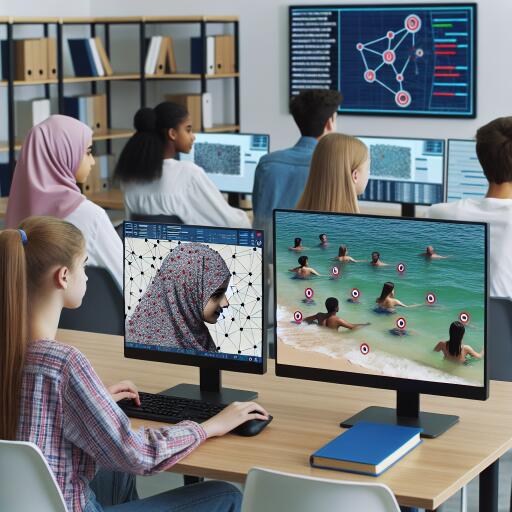A Potent New Tool in Water Safety
The relentless pursuit of safety innovations has ushered in a groundbreaking development by a team of dedicated students at Zayed University. Their recently unveiled artificial intelligence (AI)-powered model stands out as a beacon of hope for real-time drowning detection. This avant-garde system boasts an astounding 99.7% accuracy, marking a significant leap forward in water safety technology.
Helmed by the ingenious minds of Hamad Alzaabi, Saif Alzaabi, and Majed Alhammadi, under the expert supervision of Dr. Sara Kohail, this pioneering project employs AI in tandem with computer vision. The objective? To ensure prompt detection of distress in aquatic environments, enabling rapid rescue efforts and potentially saving countless lives.
A Robust Foundation: Data and Innovation
The cornerstone of this system’s success lies in a precisely curated dataset encompassing over 69,000 meticulously annotated frames. The students elaborated on their methodology: “Our dataset captured a wide array of aquatic behaviors, including normal swimming, struggling, and simulated drowning. We took careful measures to avoid bias, ensuring our model’s reliability and adaptability across various scenarios.”
Initially, the team ventured into several AI-based methodologies, testing waters with standard object detection and pose estimation. Despite their efforts, early comparisons showed existing techniques faltering against challenges like underwater distortions and motion artifacts. This prompted the students to craft an innovative, annotated underwater dataset, enriching their model with diverse drowning and swimming scenarios.
The outcome? A proprietary AI model, seamlessly integrated onto a web-based platform, empowering users with live monitoring capabilities, automated alerts, and scalable deployment. “Given the insufficiency of public datasets for underwater scenarios, we proactively developed our own resources,” they revealed.
Grounded in Comprehensive Research
Before diving into technological creation, the students invested time in understanding the gravity of drowning statistics and safety protocols. “The World Health Organization (WHO) reports over 236,000 annual drowning fatalities, with an alarming proportion affecting children,” they highlighted.
In examining existing surveillance solutions, which often rely on reactive measures or impractical wearables, the team spotted an opportunity to harness AI and computer vision. Their aspiration was clear: to design a forward-thinking, non-intrusive detection system that discerns drowning incidents as they happen.
Overcoming Challenges with Ingenuity
The journey was fraught with challenges, including technical and logistical complexities such as handling underwater distortions like refraction and motion blur, vital for object detection precision. Achieving real-time processing for high-resolution video feeds also posed significant hurdles.
The system has been crafted for seamless integration with existing pool surveillance setups, eliminating the need for extensive changes. Offering a comprehensive web-based dashboard, users can receive instantaneous alerts, view live camera feeds, and manage incidents effortlessly. Configurability of alert settings and historical event reviews make it a robust tool for lifeguards, pool managers, and safety personnel alike.
Engineered for universal adaptability, the model utilizes cost-effective underwater cameras and offers versatile deployment options, whether cloud-based or on-premise. It’s optimized for efficiency, ensuring it runs smoothly on commercially available GPUs, bypassing the necessity for premium computing equipment.
Path Forward: Testing and Commercialization
As they cast their gaze forward, the students are intent on refining their system through rigorous real-world testing and exploring avenues for commercialization. “With adequate funding, we can potentially scale our efforts and broaden our impact,” they stated.
Their journey has underscored the profound societal impact of technological advancements. “This project illuminates the potential of technology in addressing pressing societal challenges. AI’s role extends beyond automation or enhanced efficiency; it holds the promise of life-saving interventions. This experience has spurred our ambition to trailblaze further AI-driven public safety solutions.”
Beyond their own aspirations, the students hope to inspire. “Our aim is to demonstrate that Emirati students can compete on the global stage in AI and innovation domains. Through tackling real-world issues, we hope to ignite a fervor for technological progression and contribute to the UAE’s vision of establishing itself as a pioneer in AI and smart technologies.”










